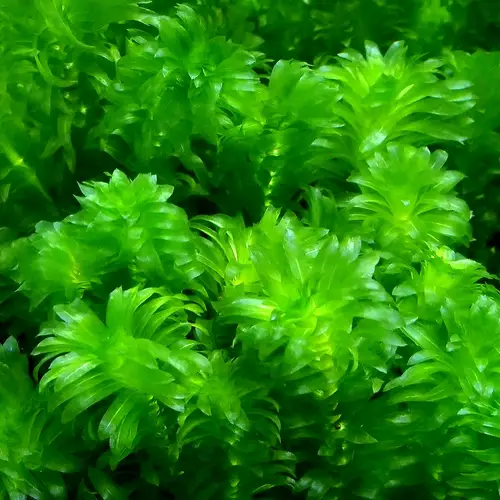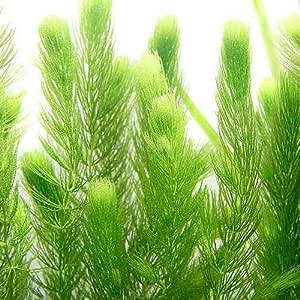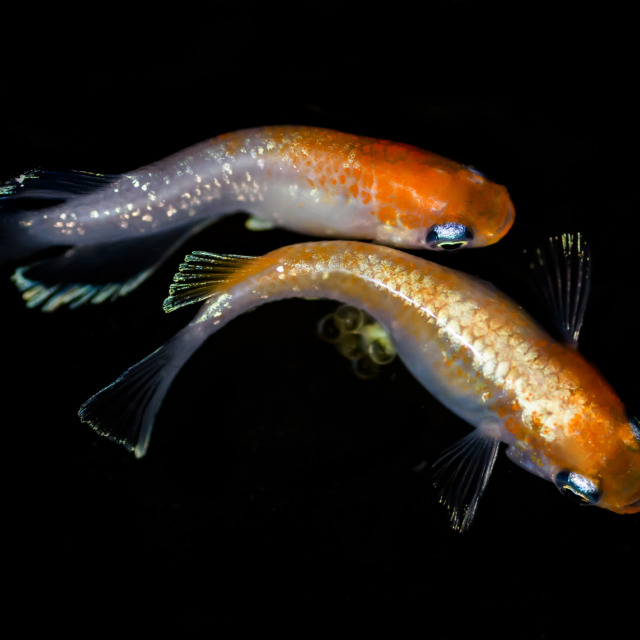An introduction to recommended aquatic plants for medaka. Which plants are best for medaka breeding and water purification?
The Best Plant for Medaka: Anacharis

The best aquatic plant for medaka is anacharis. Anacharis is hardy, multiplies quickly, and grows rapidly, which gives it excellent water purification capabilities. Adding anacharis during the initial setup of the aquarium can prevent water quality deterioration.
Anacharis also grows reasonably well in low light, unlike hornwort, which requires strong light.
Other plants compatible with medaka include willow moss and water hyacinth.
Key Points in Choosing Aquatic Plants for Medaka
Some key points to consider when choosing plants for medaka are to select hardy plants with stems or floating leaves that can propagate easily.
High Water Purification Capacity
The most important factor when choosing plants for medaka is their ability to resist water quality deterioration. Although medaka can tolerate gradual water quality changes, they are sensitive to sudden deterioration, which can cause sudden death. Therefore, adding plants with high purification capacity during the initial setup helps maintain water quality, reducing sudden deaths and health issues among medaka. Planting plenty of such plants will also reduce the frequency of water changes.
Able to Withstand Aeration
Most people who keep medaka indoors use an air pump. Many aquatic plants do not thrive in aerated environments due to the rapid loss of dissolved carbon dioxide. Few plants can thrive under aeration, so choosing the right hardy plants is crucial.
Suitable for Egg-Laying
Medaka prefer laying eggs on certain types of plants like stems or roots of floating plants. If you want to collect plenty of eggs, choose plants that support breeding.
Does Not Require Planting in Substrate
Plants typically need to be planted in soil or sand. However, anacharis and hornwort can thrive without being planted since they absorb nutrients directly from the water, giving them strong purification capabilities.
Recommended Aquatic Plants for Medaka Breeding
Here’s a ranked list of recommended plants for breeding medaka.
Anacharis

Anacharis is the best plant for keeping medaka. Its water purification capacity is very high, and it prefers polluted water over clean water. Medaka tanks with anacharis have noticeably healthier fish. Introducing anacharis reduces health issues among medaka.
Medaka also love anacharis for breeding. When anacharis is placed alongside artificial spawning beds, medaka will avoid the artificial ones entirely. The only downside is that medaka eggs will be laid throughout the anacharis, making harvesting tedious.
For breeding purposes, anacharis is not suitable, but it’s highly recommended for personal use.
Hornwort

Hornwort is another popular plant for medaka. It requires strong light to grow quickly but won’t thrive in low light. Potassium is essential for its growth, so conditioners like Contraloroine or Coralline Off containing minerals and vitamins are useful.
Willow Moss
Willow moss is also recommended for medaka. Willow moss makes egg collection easy, as medaka like to spawn in it.
It’s easier to spot eggs in willow moss than in anacharis or hornwort. However, its purification power is weaker.
Water Hyacinth
Water hyacinth is a strong, fast-growing plant recommended for outdoor biotopes. Its roots are ideal for spawning, but it dies in winter and grows too densely, blocking light to other plants. Without enough light, other plants may die, and the aquarium becomes too dark. It also requires strong light and thrives best outdoors in direct sunlight. Indoors, high-powered lights like metal halide are essential.
Water Lilies
Water lilies are grown more for their flowers than as aquarium plants. People often keep medaka in lily ponds to control mosquito larvae. Since flowers are the main attraction, they aren’t covered in detail in this article.
Amazon Frogbit
Amazon frogbit is a floating plant that resembles lily pads, commonly used outdoors in biotopes. With sufficient light, it can grow well indoors and is suitable for medaka tanks. However, it is sensitive to low temperatures, so it needs heating.
Salvinia Cucullata
Salvinia cucullata, also called water fern, is easy to propagate and widely used for medaka. It’s hardy and fast-growing, offering excellent purification capacity. However, its rapid growth can cover the entire water surface, creating layers and a chaotic situation. It’s better suited for outdoor medaka biotopes.
Cabomba
Cabomba is traditionally used as a goldfish plant. It’s used in medaka tanks but is more difficult to grow than anacharis or hornwort and requires substrate planting. It also needs carbon dioxide and isn’t very hardy.
Anubias and Microsorum
These are shade-tolerant plants that don’t require strong light or substrate. Thus, they can handle aeration and are suitable for medaka tanks. However, they grow slowly, lack clear purification capacity, and aren’t great for egg-laying. They make excellent decor plants since they need little maintenance.
Amazon Pennywort
Amazon pennywort is a hardy plant that doesn’t need carbon dioxide or fertilizer. It grows quickly and purifies water, making it a good choice for medaka tanks. However, it is sensitive to cold and needs heating in winter.
New Large Pearl Grass
New large pearl grass is a carpeting plant that spreads like a carpet in aquariums. Surprisingly, it’s hardy and can grow without fertilizer or carbon dioxide, allowing it to form carpets in medaka tanks. Some shops set up beautiful layouts with this plant, making it ideal for hobbyists.
Other Plants
Other plants can also be used with medaka, but most require soil or carbon dioxide for healthy growth. Most stem plants don’t thrive with aeration, making them unsuitable for medaka.
Conclusion
In my experience, maintaining aquatic plants is challenging due to the need for carbon dioxide, soil, and strong light. Even so, red plants may struggle to grow, which requires a significant investment in both time and money.
Medaka don’t need soil or carbon dioxide to thrive, so they are often not compatible with most plants. Instead, it’s best to use hardy plants like anacharis or hornwort that don’t require carbon dioxide or soil.











No comments yet.